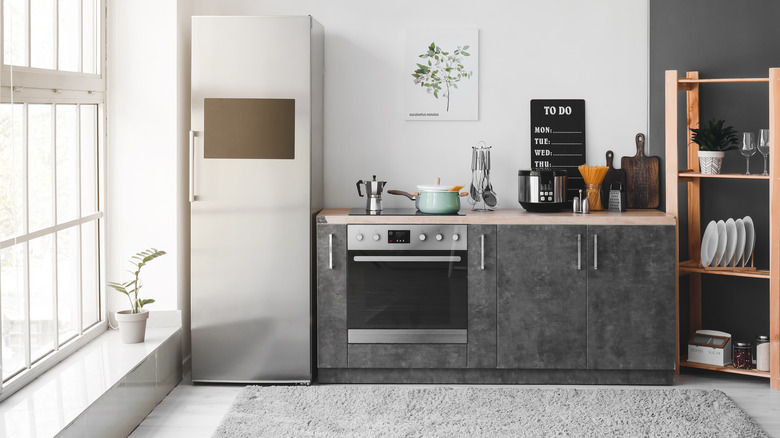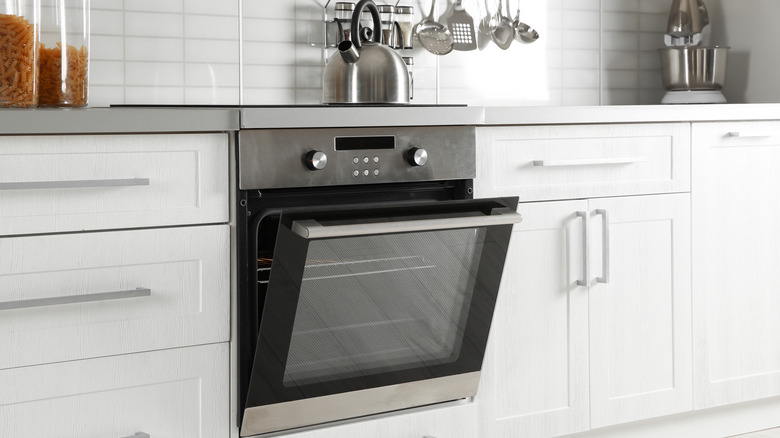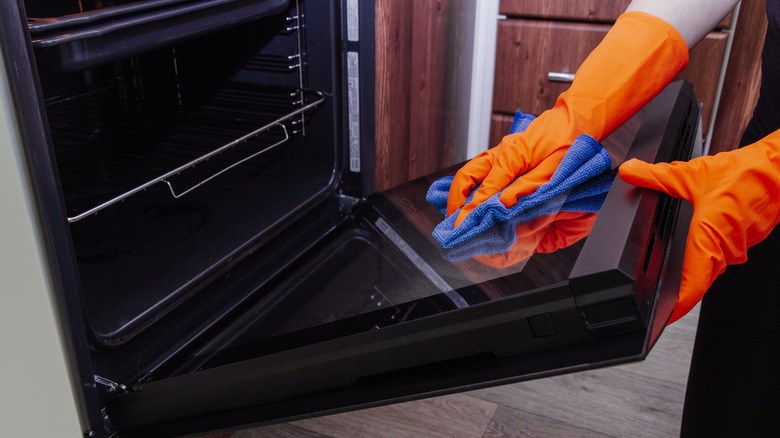Why Moisture On Your Oven Door Is A Red Flag
Your oven needs to be kept in tip-top shape if you want it to last for a long time. Excessive moisture appearing on the door is a red flag because it can rust or damage some of the internal parts. Several issues can cause moisture in an oven and it's important to identify which problem you have. One common reason might be poor insulation — if an oven is not properly insulated, the heat generated inside can escape, causing its outer surface to cool down.
Another cause is when there's a huge gap between the temperature of the oven and the temperature of the room. In some cases, moisture on your oven door may be a minor issue that can be easily resolved by improving insulation, changing the ambient temperature of the kitchen, or replacing a worn-out part. However, it could also indicate a more significant problem with the oven's functionality, and it may be necessary to seek professional assistance or consider replacing the appliance altogether.
Causes and fixes
If you notice that condensation forms because of the outer temperature, try to set the temperature in your kitchen to be more balanced. Aim for at least 70% Fahrenheit (you can change the temperature back when the oven is not in use). Moisture on your oven door can also point to issues with the tangential fan, which is designed to remove vapor during the cooking process and cool down the oven. A broken fan means there's excess moisture staying inside the oven and eventually settling on the door.
Alternatively, moisture could also indicate a problem with the door seal, which is responsible for keeping the heat and vapor inside the oven. When the seal is worn out or damaged, it can allow moisture to escape, resulting in condensation on the door. If you have an old oven, this is a likely cause. If it's a problem with either of these parts, the solution is to replace the part so the oven can operate properly.
How to maintain your oven door
Regularly cleaning and maintaining your oven door glass is a significant part of preserving its quality. Before you do anything, check your manual for guidance on how best to take care of the oven. Note that you should only clean it when it has completely cooled down. Use a cloth to wipe off the condensation formed after using the oven and leave the door open so it dries well. With a microfiber cloth and an all-purpose cleaner with a degreaser, you can wipe any stains on the inside and outside of the glass.
Another way to reduce the condensation in your oven is to use cookware with lids when preparing moist or juicy foods, so they won't let out as much steam. Some lids are designed to ensure that the steam is still created when they are on, which means your food doesn't have to come out dry even if it's covered.


